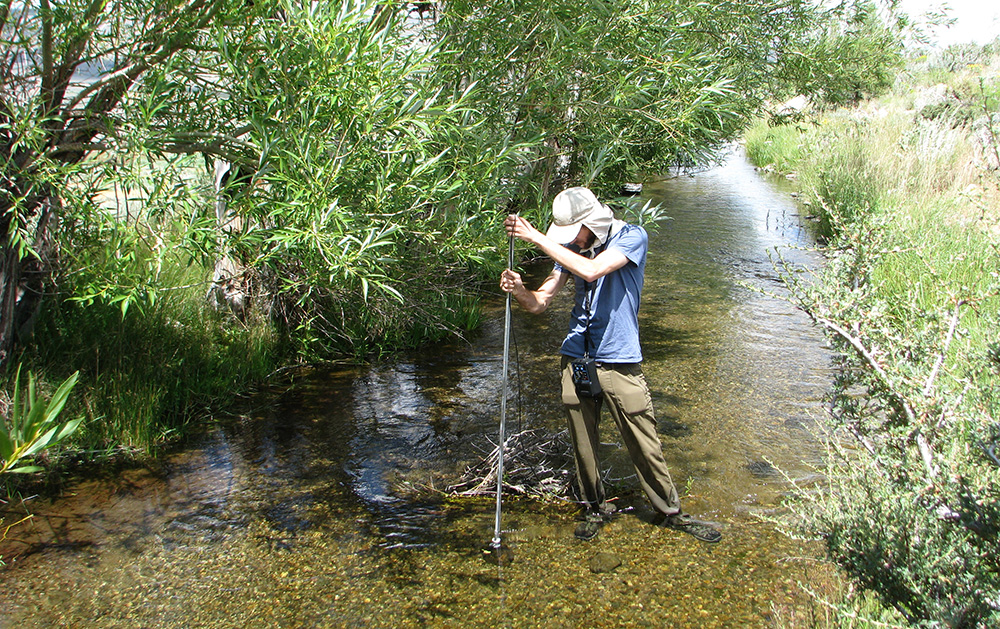
This post was written by Lisa Cutting, 2002-2020 Eastern Sierra Policy Director, 2000-2001 Environmental Resource Coordinator, and 1999 Mono Lake Intern.
Unfortunately, the saga continues for the lawful return of water to Mill Creek.

After Mono County denied Southern California Edison (SCE) an easement necessary to rehabilitate the existing Mill Creek return conveyance, SCE was forced to file for an extension from the Federal Energy Regulatory Commission (FERC) to explore other pipe routes. Over the summer, FERC denied the request on the grounds that it did not demonstrate that the submitted proposals were within the scope of the originally authorized construction. Fortunately, this technicality can easily be resolved by SCE submitting a more detailed description of the project and a specific timeline to FERC for approval.
Long wait for Mill Creek
Mill Creek suffers from water diversions that cannot be returned to the creek after flowing through SCE’s Lundy hydropower plant due to inadequate infrastructure. Currently over 75% of the creek’s flow is diverted (depending on snowpack) onto Mono County lands—almost twice the amount the County’s water rights allow (see Summer 2014 Mono Lake Newsletter). The issue should have been resolved with a settlement agreement in 2005 and the resulting FERC license amendment in 2011, which called for SCE to reconstruct the return conveyance to allow Mill Creek water to be returned to the creek. But the process continues to languish.
Mill Creek is the third-largest tributary to Mono Lake and offers the greatest riparian habitat restoration opportunity in the basin. It has suffered from insufficient water for decades, and it shows—especially in the lower stretches of the stream as it nears Mono Lake. Once-majestic cottonwoods are just barely surviving and the riparian vegetation is constricted to narrow corridors directly adjacent to the creek. Once the return conveyance is constructed and more water returns to the lower stretches, we anticipate the recovery process to begin immediately.
Next steps
The Committee’s legal analysis of FERC’s response identifies a simple and clear path forward. In order for SCE to satisfy its FERC license requirements it needs to submit detailed plans describing its preferred return conveyance option and a corresponding comprehensive schedule to complete the project. Once this information is submitted and approved by FERC, SCE can schedule construction.
Meanwhile, monitoring continues
Mono Lake Committee staff continue to monitor Mill Creek water flowing in the north Mono Basin, and to compare the use of the water on the ground to water rights allocation and availability. The Committee began this monitoring program back in 1999, modeled after monitoring done in the south part of the basin by the Los Angeles Department of Water & Power. Since then, the Committee has continually made improvements to the program.
Over the summer the Committee worked with staff from Mono County and the Inyo National Forest to share monitoring protocols and data. With Mono County’s recent Conway Ranch conservation easement and the Inyo National Forest’s ongoing management of the DeChambeau Ranch and ponds, consistent and clear understanding of water distribution and use is essential for future water management decisions and prioritization, especially in years like this when water supply is scarce and yet must still satisfy multiple needs.
The Committee is confident that there is enough water—if managed correctly and efficiently—to fulfill existing water rights and return Mill Creek’s water to Mill Creek to make it a fully functioning and vibrant stream system once again.
This post was also published as an article in the Fall 2015 Mono Lake Newsletter (page 7).
